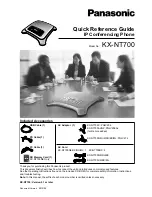
Health and Safety Information 128
manufacturers to ensure that cardiac pacemakers and defibrillators are safe from wireless phone EMI. FDA has
tested wireless phones and helped develop a voluntary standard sponsored by the Institute of Electrical and
Electronic Engineers (IEEE). This standard specifies test methods and performance requirements for hearing aids
and wireless phones so that no interference occurs when a person uses a compatible phone and a compatible
hearing aid at the same time. This standard was approved by the IEEE in 2000.
FDA continues to monitor the use of wireless phones for possible interactions with other medical devices. Should
harmful interference be found to occur, FDA will conduct testing to assess the interference and work to resolve the
problem.
Additional information on the safety of RF exposures from various sources can be obtained from the following
organizations (Updated 12/1/2006):
•
FCC RF Safety Program:
http://www.fcc.gov/oet/rfsafety/
•
Environmental Protection Agency (EPA):
http://www.epa.gov/radiation/
•
Occupational Safety and Health Administration's (OSHA):
http://www.osha.gov/SLTC/radiofrequencyradiation/index.html
•
National Institute for Occupational Safety and Health (NIOSH):
http://www.cdc.gov/niosh/homepage.html
•
World Health Organization (WHO):
http://www.who.int/peh-emf/
•
International Commission on Non-Ionizing Radiation Protection:
http://www.icnirp.de
•
Health Protection Agency:
http://www.hpa.org.uk/radiation
•
US Food and Drug Administration:
http://www.fda.gov/cellphones
Road Safety
Your wireless phone gives you the powerful ability to communicate by voice, almost anywhere, anytime. But an
important responsibility accompanies the benefits of wireless phones, one that every user must uphold.
When driving a car, driving is your first responsibility. When using your wireless phone behind the wheel of a car,
practice good common sense and remember the following tips:
















































